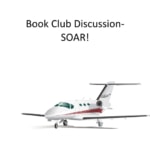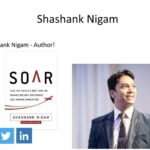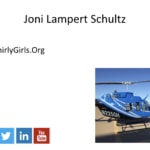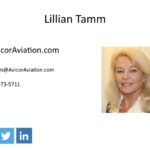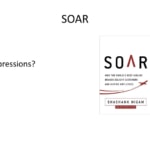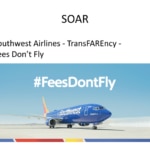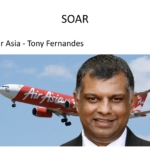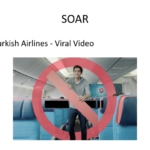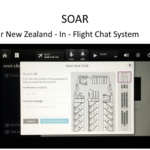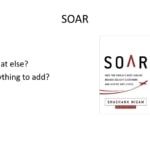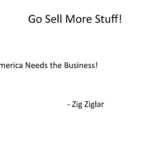We were thrilled that author Shashank Nigam joined us live for the panel discussion, which made this MUCH more interesting!
We talk about airline marketing with aviation professionals Lillian Tamm, Joni Lampert Schultz, Shane Ballman, and Paula and John Williams about some of the topics covered in his airline marketing book SOAR.
Transcript – Book Club Discussion – SOAR with Author Shashank Nigam
Narrator: You’re listening to aviation marketing Hangar Flying, the community for the best sales and marketing professionals in the aviation industry. You can’t learn to fly just from a book, you learn from other pilots who know the tools, the skills and the territory. Your hosts, John and Paula Williams are your sales and marketing test pilots.
They take the risks for you and share strategies, relevant examples, hacks and how-tos. Be sure to subscribe on iTunes, so you won’t miss a thing.
Paula Williams: So, this is actually real exciting. I am so glad to have an author actually in one of our discussions. I know we’ve had Kim Walsh-Phillips do a separate interview and then do a book club discussion.
But actually having Shashank in the room with us is intimidating and also very, very cool. But Shashank, if you want-
Shashank Nigam: I promise to do my best not to be intimidating today.
Paula Williams: [LAUGH]. Before we started recording he was telling us how he was going to quiz us out on what’s, what’s at the bottom of page 23, and that kind of thing, for those of us who don’t have photographic memories.
Lillian Tamm: I have my book here, I can look things up.
Paula Williams: Yay. You can bail us out, that’ll be wonderful.
Lillian Tamm: I’ll try, I’ll try.
Paula Williams: That’s fantastic, so yeah, we’ve done one interview with Shashank, and I love the book. And actually, the more I talk to you, the more fascinated I am by all the stories that you have of Airline people and aviation and all kinds of things, aspects of aviation that we don’t necessarily get into all the time.
You’re welcome.
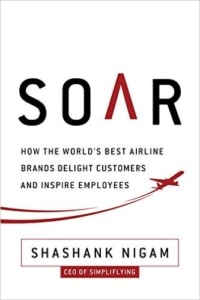 Shashank Nigam: Hi everyone, I’m Shashank Nigam author of Soar if you already haven’t read it and thanks Paula for inviting me onto discussion. And most people who are trying to break into aviation or an unknown industry usually start with a book. I didn’t, I started with a blog seven years ago, called SimpliFlying.
Shashank Nigam: Hi everyone, I’m Shashank Nigam author of Soar if you already haven’t read it and thanks Paula for inviting me onto discussion. And most people who are trying to break into aviation or an unknown industry usually start with a book. I didn’t, I started with a blog seven years ago, called SimpliFlying.
And the blog became pretty popular in international airline marketing and aviation marketing. And seven years later, I did write the book. So I’m coming at it the other way around. But really, using my experience working with a lot of these airlines in the books to really showcase what makes them different, what makes them stand out.
And when I was selecting the airlines here, I wanted to have a have LCC then have legacy carriers, and have one in each continent of the world. So, I managed to check that box. I wanted to make sure that there are some airlines everyone thinks they know about, like Singapore Airlines and Southwest, and yet there are airlines which would be pleased that you would be introduced to, like Kulula or Boeing or Finnair.
So, I think that was the objective when I started out, because these are really endearing brands. Singapore Airlines and Southwest are the two most profitable airlines in the world over 20, 30, 40 years. You’ve got the likes of Finnair and Kulula, which are champions in the market that they’re in.
Kulula is the largest and the first LCC in Africa. Finnair is the largest European carrier in China, of all places, who would have thought?
Paula Williams: Yeah.
Shashank Nigam: And I just felt that these are very unique stories that we can share.
Paula Williams: That’s wonderful, and I know you’ve had some great success with the book.
I know you’ve sold out at least once and had to-.
Shashank Nigam: We did sell out once and believe it or not, Amazon us, you very badly, if you do sell out and I was, that supposed to be a good thing.
Paula Williams: It is. We actually were trying to use your book in our book club a month earlier than we actually we’re able to because of the delay. Because it was sold out so, I think that’s a good problem to have.
Shashank Nigam: We’ve got a very good initial reception, not just from the industry, but even the airlines individually, we’ve had bulk orders from the likes of Bombardier to Royal Brunei Airlines, wondering if we’re all so I think that’s really encouraging.
Paula Williams: That is, that is fantastic. And-
Shane Ballman: Hey, that was Shane. I’m sitting in the airport right now. So, I apologize for not being online.
Paula Williams: Excellent, Shane, good to see you. Shane is from Synapse MX. All right, and Joni Lampert Schultz. WhirlyGirls.
Joni Schultz: Yes.
Paula Williams: Good to see you.
Joni Schultz: Yes, that’s me. I’m on the line.
Paula Williams: [LAUGH] Okay, that’s wonderful. All right, and Lillian Tamm, I know you’re here.
Lillian Tamm: Yes, I am.
Paula Williams: Wonderful, good to hear you as well, Lillian is with Avicor Aviation, of course. And of course, we’re John and Paula Williams of ABCI. So, let’s start just with initial impressions.
Let’s start with Lillian, then.
Lillian Tamm: My impression was it was a very good read, first of all but also very interesting to see how the different airlines have approached the market and the different angles that they have come with. With the commonality that I see with everybody is the customer still, is the main focus for most of them, because without the customers you’re not going to have a business.
Shane Ballman: Say the upper end of the customer is the focus.
Lillian Tamm: The upper end?
Shane Ballman: Particularly for US Airlines, because he was very perceptive and realized in American, United, Delta, you can’t tell them apart when you get in the airplane. All the same colors, all the same everything, no discernible difference.
Lillian Tamm: No, that’s true, but with all the airlines that are discussed in the book, nearly all of them, there’s a focus still on you’ve gotta satisfy the customer, whatever that customer is, and it’s going to be different in different markets.
Paula Williams: That’s absolutely right, and Shashank what did you, I mean obviously you had some impressions from having written the book.
Did we lose him? He’s-
Shashank Nigam: I’m right here, I did drop off for a minute, I’m back.
Paula Williams: That’s all right, okay let’s-
Shane Ballman: You asked him a question he wasn’t ready for, so he’s failing the test.
Paula Williams: [LAUGH] Exactly, that’s hysterical. Anyway, we were just doing impressions about the book, and I’m sure you will hear those when you hear the recording and things.
But there’s a little bit of a difference of opinion about marketing in aviation industry, and one of the things that John observed was that, a lot of airlines, look alike and you picked the ones that were very different from one another. And Lillian’s comment to that, was just that, you have to serve the market and the markets are so different for each of these airlines that of course the airlines are going to be different.
Shashank Nigam: That’s quite interesting that you noticed it. Although, if you’ll see, airlines deploy similar strategies based on markets. So, Lillian you’re right like Finnair and Air New Zealand couldn’t have been more different. But yeah, when they go off of the Chinese market, they use the same strategies.
Lillian Tamm: Because they’re different.
[CROSSTALK]Lillian Tamm: Because different cultures have different, if you want to call it touchpoints, or things that really speak to them. A big portion of this from my perspective is that you have to understand the culture that you’re dealing with.
Shashank Nigam: Right, exactly, [INAUDIBLE] [CROSSTALK]
Shashank Nigam: Yep.
Paula Williams: Good point, all right, let’s move along.
What are the differences between airline marketing and what most of us are involved in, which is some form of private or business aviation marketing?
Joni Schultz: I’m going to kinda put the impressions and with the question all in one.
Paula Williams: Perfect.
Joni Schultz: My aviation career began in the airlines.
Paula Williams: [LAUGH] Yeah that’s right.
Joni Schultz: So yeah, I worked for a small commuter airline, and then I worked for a major airline after that. So, all the airline, all that airline marketing Putting all that kinda speaks to me. So this is a great book where it all is comparing all the different airlines and what you were talking about with customer service and the needs of the end user.
So it’s really, I haven’t read completely through but I kind of picked through a couple of things and of course Southwest being one of them because that was kind of. The airline I worked for was Piedmont Airlines before that and they were kind of a result of deregulation, and very much a success in their day.
Because of one, customer service. And then, number two, I think they were in between that legacy and Southwest. So I got to do that, and be part of that company firsthand. And sell that company, because I was a reservation sales agent. So I’m loving what I read, and personally I’ve never flown Southwest Airlines.
So it’s very interesting, even though I know a lot about them, I’ve never really flown on them. So loving this, the second question [LAUGH] was refresh my memory, because I’m just trying to [CROSSTALK].
Paula Williams: That’s okay, I was just going to say, what have you seen that are the big differences between the two types of aviation marketing, which is really airlines and then everything else?
And Joni, I know you’re now working with the Whirly Girls, which is a non-profit organization for women that are helicopter pilots, which is pretty far from airlines, but you’ve covered the whole spectrum really.
Joni Schultz: Well yes, and as I was reading a couple of my takeaways, especially with the Southwest, was the comment Mike Hafner when he understood that every employee had a story.
And the job of the leadership is to learn that story and to connect. And that’s what I’m doing as the president of an organization. Women are giving us their money on an annual basis. So, that to me, it always goes back to the story, the experience, the value that you put in the organization.
Or with the airlines it’s different because you’ve got a commodity that starts at one time and ends at another time, and you’re hoping to fill every seat.
Paula Williams: Right. [LAUGH]
Joni Schultz: That to me is the biggest difference because, [LAUGH] once that airline flight goes bye-bye, there goes your revenue?
Paula Williams: Right.
Joni Schultz: It’s not recoverable.
Paula Williams: Right, right, right.
Joni Schultz: So that’s kinda where I’m seeing the biggest difference. Where I have a chance to, with what I do, develop a long-term relationship with the individual. And the airlines have to do it as well, but they would need to have that repeat customer.
Paula Williams: Right, right, right.
Joni Schultz: And so that’s kinda, I don’t want to talk too much. But that’s kinda my gist of the two differences.
Paula Williams: Perfect. Lillian, what did you have to add on that one?
Lillian Tamm: Yeah, I do think in private or business aviation you have to be a bit more personal.
Because many of the clients are, let’s say you’ve got an air charter company and they have they’re using corporate jets, and so they’ve got high-end clients. And things need to be customized, not just in a general sense, but specifically customer by customer. You need to know details. One of the airlines, some of these airlines are actually doing that, like for their business class, or even for some of the economy.
But there’s a very fine level that needs to be done, I think, in private and business aviation.
Paula Williams: That’s true. Shane, are you still with us?
Shane Ballman: I’m here.
Paula Williams: There he is. Yeah, did you have anything to add to that?
Shane Ballman: Well, I am a little biased because I did work for Southwest for several years.
Paula Williams: [LAUGH] You got the home team [INAUDIBLE] here.
Shane Ballman: Right, [LAUGH] I think it’s very accurate that there is a difference between commercial aviation and then the private business aviation side of things. And I would definitely agree that when you’re dealing with a business aviation side of things, it’s far more about the person-to-person contact.
How do you treat a human being, like another human being? And the airlines are certainly getting there. I think that they have a ways to go still.
Paula Williams: Right.
Shane Ballman: But yeah, the contrast there I think is impressive. And, yeah, I would agree that the book does a really good job of sort of drilling into those examples.
Paula Williams: Fantastic.
Shashank Nigam: I think it’s interesting that you mention the points that have been mentioned, because a lot of the airlines don’t care about the individual customers. Customers are just numbers. And, they refer to them as PAX, P-A-X, and that’s about it, it’s all figures, right? But the airlines that win are able to treat customers at an individual level really like guests who are entering their homes.
And I know that sounds very fluffy, but that’s the reality. The airlines that win ultimately over time are able to deliver that consistently personal service. And I think that’s a lesson that commercial aviation can take from private or business aviation. Because not many commercial airlines do that very well.
Paula Williams: Right, I think there’s a lot commercial can take from private as well, but I just realized that I, [LAUGH] jumped over John. He was running around doing some technical stuff around here so. Are you back, John?
John Williams: Well, I think back in the day, because I’ve been in this since back in the day.
The marketing from commercial side is a lot more personalized than it is now. So I think it’s degraded over time. So with any kind of luck you’ll see it go back the other way.
Paula Williams: Good to hear. Okay, so moving on to our favorite, [LAUGH] or at least the favorite of a lot of international aviation marketing folks on the line, because they think it’s one that we have a lot of experience with.
I thought this transFAREncy campaign was brilliant. And I liked hearing about that. [INAUDIBLE] All right. Perfectly fine. Not a problem. We promised we wouldn’t embarrass anybody today by asking them, what happened on the end of page 23?
Lillian Tamm: Well transFAREncy, that’s page 27.
Paula Williams: Good I can reference it now. There you go.
Lillian Tamm: Yeah no it was a great strategy to have the fares be so that people could see what is what they’re getting for it, no frills. It’s no extra charges and all that. Very good concept.
Paula Williams: Right. Excellent, and Shane?
Shane Ballman: So, yeah I would agree that if you’re looking for ways to do a core differentiation between what is essentially a commodity service, You have to do something that gets people’s attention, right and that campaign I think was one of those that really moved the needle for them along with the other one without a heart it’s just a machine.
So I think that there were a lot of really clever things that they have done from a strategic marketing perspective. And it’s hard for another operator that’s out there, to be able to compete with that, right? So they took something that was part of their culture, and they weren’t charging for those anyway, and they turn that into a marketing gimmick that got even more attention from something they were all ready doing.
Paula Williams: That’s true, that’s brilliant. And like you said, it’s not just cleaver, it’s a lot deeper than that.
Shane Ballman: I think it was great.
Paula Williams: [LAUGH] You have a very low tolerance for BS, so.
Shane Ballman: And I think that’s what a lot of this charging fees is, is BS and I know why they do it is because the typical user or whatever is going for the lowest ticket, they don’t understand it when you start adding fees in and you get a cheaper ticket somewhere else.
But whatever.
Lillian Tamm: The real brilliance of this strategy was exactly taking something that they were already doing.
Shane Ballman: Right.
Lillian Tamm: And making a big deal out of it.
Shane Ballman: Absolutely.
Lillian Tamm: That’s something that’s easy to overlook in any business, because it’s something you’re all ready doing, and you don’t even realize it.
Paula Williams: That is absolutely true. And did you want to comment on that? I know this was a, I’m picking little pieces out of a big book, but that’s because we only have a little bit of time here, so.
Shashank Nigam: Yeah, I think that is a very important point.
It’s those two things, Elaine you pointed out that Southwest was all ready doing it. What it shows is that they remain consistent to who they are, while the world around change them as the United changed, the American changed, Delta changed. Now they’re doing basic economy fares. Every airline is down for a race to the bottom.
But Southwest says, hey, you know what? We’re not going to charge bag fees. And you know what? We’re not going to do basic economy. We’re going to treat you like humans. And just by consistently doing what they’ve been doing since the 1970s, they are now standing out. In fact, they’re more full service than many of the technically full service carriers out there which I think is remarkable.
And I think that truly shows the power of knowing why you do what you do, and then sticking to your brand, not just changing every two days based on what’s the latest, shiniest gimmick out there.
Paula Williams: Right. And I think the lesson for our group, we’re all looking for ways to apply these things to our own businesses.
And that really is, what are you doing all ready, and what are your competitors not, that you can really make a big deal of. And point that out and make a hashtag and make a poster and all those cool things like that.
Shashank Nigam: Exactly, exactly. My question, though, I have a quick question.
Paula Williams: Yeah.
Shashank Nigam: So when I was in Dallas touring around and visiting Southwest I was there, I spent three days there and I do have friends at American airlines as well then I ended up having one of my last muse with the guys over at AA. Was sitting at a ribs place right under the fees don’t fly banner.
Paula Williams: Yeah.
Shashank Nigam: [LAUGH] From Southwest and I look up and I asked this guy from American, two of them, so what do you think guys? And he’s like to be honest, customers sort by price. We don’t care, we just sort by price, and if we are not the cheapest, then they won’t choose us.
Now what do you guys think of a statement like that? How true is that?
Paula Williams: Good question.
Shashank Nigam: American is basically saying, because the customers want it, we’re going to give it to them. What’s your thinking about that?
Shane Ballman: I think it’s short-sighted, personally.
Paula Williams: I think so, too.
Shane Ballman: That’s almost like the Zig Ziglar style of selling, right, where you’re selling a used car, and you don’t really care if they come back because you’ve got your money.
Paula Williams: Yeah.
Shane Ballman: And if you’re trying to build a long-term relationship, and you want that lifetime value of the customer to just go up and up and up, then that’s a terrible way to do business.
Paula Williams: Right, that is true. But I would love to see the data, how did this do for Southwest? Did it actually improve their business? And I don’t that anybody knows because I don’t know if they’re showing their cards. [LAUGH] But I’d love to see-
Shashank Nigam: Well, it did.
If you look at their financial results.
Paula Williams: Yeah.
Shashank Nigam: They had a $2.something million dollar profit.
Paula Williams: Right.
Shashank Nigam: That they just announced. And that is the highest amongst all carriers in the US. So if anything, it shows their services, at least over the last couple of years, are still paying off.
Paula Williams: Right, so it certainly didn’t hurt them. We don’t know specifically if this campaign is what caused that.
Shashank Nigam: Yeah.
Paula Williams: Yeah, and their, yeah. Anyway.
John Williams: What’s interesting is American and Delta had their opportunity, but they started treating even their multimillionaire, multi-million mile fliers as nobody.
Paula Williams: Yeah.
Shashank Nigam: Yeah, you’re right. You’re right.
John Williams: Because I’m one of them, right?
Paula Williams: [LAUGH]
John Williams: And I mean seriously, I’ve flown millions of miles with Delta, and now it’s almost as if I had just now discovered Delta and I walked on board.
Paula Williams: Right. Okay, so I think we agree that was a brilliant strategy on their part.
Moving on, Finnair. Managing cultural differences. This is something that I think America’s are scared to death of. Even acknowledging cultural differences, you can get into so much trouble, so fast, by doing something that’s perceived as insensitive, or anything like that. So I thought this was really brilliant, the story of Helena?
Shashank Nigam: Yeah, you got that right, Helena [INAUDIBLE].
Paula Williams: Yeah, Helena exactly. And how she would kind of make fun of some of the passengers of different backgrounds and things, but she did it so warmly and with such I’m going to say affection that it worked and works for her.
And I think that’s really the difference, everybody can tell the difference between condescension and affection. Even children can see the difference, right?
John Williams: Yes, but the law can’t.
Paula Williams: [LAUGH] True, right. All right.
John Williams: That’s why, and I know exactly what you’re saying, because over here you do the same sort of thing, and somebody’s going to say they’re offended.
Paula Williams: Right, that’s the trouble.
John Williams: Here, they’re doing it in her warm affectionate way.
Paula Williams: Right. Joni, what do you think? I know you’ve run into a lot of this probably in your travels.
Joni Schultz: Well, yes, I mean we have an international clientele, and I think that again, it’s all about the delivery right?
[LAUGH] For most things is people know that you’re, well, not picking on them, but alienating, focusing on them and not just. What do I want to say? I’m sorry. Meaning that if it’s Met with ill will, as opposed to not really knowing, I think, that they can sense that.That you had no idea what you were, that you were offending. So, I don’t think that people do that intentionally. If you throw a little humor in there, lightheartedness is a good thing. Also educate yourself a little bit. I think that perhaps that’s what needs to be done if you’re flying outside of the culture in which you live in.
Then you definitely need to be educating yourself on what is the culture, and how do I best approach business there.
Paula Williams: Right, Lillian?
Lillian Tamm: Yeah, that is definitely true. In the US, there is a minimal tolerance for the differences in culture. But if you go outside, if you do anything that’s international aviation marketing at all, especially being sensitive to cultures is a huge thing.
And, certainly in business aviation, for companies that are, we tend to have a global reach no matter what for most companies. And that’s something that we definitely need to be aware of and to manage those cultural differences. Because you don’t sell the same way in different cultures. I found it myself In Dubai, and we had a meeting with somebody from Sharjah, and definitely being a blonde woman, not really a good move.
John Williams: [LAUGH]
Paula Williams: That’s interesting, yeah that’s great. In fact, I know John and I have done a lot of business in India, and we get made fun of all the time because of some of the American quirks and I don’t mind it at all. I think it’s actually kind of fun.
It really breaks the ice.
John Williams: Yeah, we kinda laugh at it. But airline wise I have done minimal traveling internationally and we have flown on Kofta airlines in to Honduras and India airlines in India and, another one or two in India. But, Emirates airlines to me has been my favorite thus far.
They way they treat you, I mean even in coach, right, coach you’re treated as first class over here, is why they would be in first class over here. You just [INAUDIBLE].
Shashank Nigam: Yeah, you’re right, a lot of these airlines that just treat you well, that just treat you nicely.
Say Jet Blue, right?
Lillian Tamm: Yeah.
Paula Williams: Shane?
Shane Ballman: Well that’s kind of the crazy thing, right? I mean the service standards have slipped so much, that if someone actually treats you like a normal person would treat another person, everyone raves about the service, right? It’s kinda crazy. I mean for the example of Helena.
There was a comment in there that I thought was interesting where she said that she doesn’t have one service strategy. So she doesn’t have some template that she’s follows every single time. She uses some emotional intelligence to figure out how can I interact with this person? How do I make a meaningful impact on their day?
And I thought that was pretty powerful.
Paula Williams: Right, absolutely. Did I hear another beep, did someone else join?
John Williams: We got somebody signed in as guest.
Paula Williams: Yeah, that’s what I’m asking about, so that’s fine. All right, I just don’t want to overlook anyone if anyone has something to say besides that.
And Shashank I just want to give you an opportunity to respond to that as well.
Shashank Nigam: Yeah, I mean, as Shane said, it’s actually a little sad that if an airline treats you normally it’s, wow! Result though is an opportunity for many airlines where hey, guess what? If we just go above normal, you’re fantastic.
So if you do decide to be nice, the world is your oyster and there are lots of low hanging fruits there.
Paula Williams: Right, absolutely, all right.
John Williams: Airlines and cable companies.
Shashank Nigam: [LAUGH] Yeah.
Paula Williams: [LAUGH]
John Williams: Right?
Shashank Nigam: [LAUGH] And.
Paula Williams: Yes, those utilities, they know they got you.
All right, now Tony Fernandes is kind of a big personality, speaking of big personalities in the world right now. In the tradition Herb Kelleher and the other big personalities in aviation. I thought that was kind of a neat story.
Paula Williams: Joni do you want to start? We’ll put you on the spot again.
Joni Schultz: Again, I didn’t get that far, I have to apologize.
Paula Williams: No problem.
Joni Schultz: My life has gone full crazy. It’s just stuff. [LAUGH] A move will throw a bunch of little wrenches into your day and life.
Paula Williams: Absolutely, I actually really admire you for just even being here today so that’s fantastic.
Joni Schultz: Well I didn’t want to miss, I mean I wanted to listen even that I can. Maybe I should go last, because then I do have at least some world of experience that I might be able to interject.
Paula Williams: [LAUGH] Good, okay, we’ll do that. So Lillian.
Lillian Tamm: Yeah, it’s kind of a different thing having a personality being leading it.
And I can definitely see for that particular airline, is it certainly helps, because people, especially people who don’t fly much, or are new to the market, and such. Having that personality to connect with was really good, has been really good for them.
Paula Williams: I think every company that we work with, we look for a rock star, somebody that we can make into a knowable personality because people like to do business with people instead of with companies or corporations.
I think that’s a thing nowadays.
Shashank Nigam: And I think that’s becoming harder and harder by the day, because large corporates are exactly that, faceless entities. So when you attach a face like a Richard Branson or a Herb Kelleher or Tony Fernandes, people see a bit of themselves in these people or aspire to what some of these people have achieved.
I mean not everyone sees a bit of them in Richard Branson but everyone wants to be that cool, well loved, billionaire [LAUGH].
Paula Williams: [LAUGH] And how about toys and the island and all that? That’s true.
Shashank Nigam: Yeah What I found, I mean I’ve followed Air Asia quite closely having grown up in Singapore.
What I found quite surprising when I did interview Tony and his team, was how when they started out, all they had done was launch music albums. All they had done was launch artists, and Henter said Let’s just launch this airline and let’s launch Tony as our single artist and let’s promote the single.
Once we’re done we’ll do the album and then we’ll the cover and then we’ll do the next single. I thought that was interesting approach.
Paula Williams: Right. Absolutely. Shane what do you-.
Lillian Tamm: That’s probably a new, sorry definitely new for aviation.
Paula Williams: That’s for sure. [LAUGH] Although there’s some parallels with Virgin.
Also in music and also in aviation and also new to both. Sorry, I interrupted Shane before I even let him talk. [LAUGH]
Shane Ballman: It’s okay, I see how I rank.
Paula Williams: [LAUGH]
Shane Ballman: So I think that it’s kind of a double-edged sword to have someone that That visible.
So where their personality ends and where their company’s brand begins, is often blurred. So sometimes it’s a really good thing, and sometimes it could be a really bad thing. I know there was a lot of criticism that was going around about Tony when Flight 8501 happened. And it started out where everyone was saying, well, no, no, no, no, you should not be out there talking like this, you need to have a press person out there taking care of things and you need to be in the back.
And over time, I think people did a 180 and realized this guy’s not up there giving beatitudes, he actually cares. He’s trying to reach out as much as possible. So, assuming that a likeness in civil norms and whatever the expectations are of the culture, will allow you to shine through to your true self.
I think that that works out pretty good. But if you happen to be in a situation where there is knee jerk responses and then people wont come back and consider what happens afterwards and that could potentially be a bit of a wildcard to deal with.
Paula Williams: Right, John?
John Williams: And he was also reasonable with his flight crews and how he treated those guys, as well. So he was through and through like that.
Shane Ballman: Absolutely.
Paula Williams: Great but you gotta have a thick skin.
Shane Ballman: I remember-
Paula Williams: Go ahead.
Shashank Nigam: I remember in my chat with him, he mentioned that crash that happened on Christmas Eve was the hardest time in his life.
And I asked him, so, have you done some media training? Do you know how to deal with this? And Tony told me, I didn’t even think how I should be acting, I just acted, my first instinct was, I should be there. Because my question to him was, did you plan to do a PR plan that you should get there even before the ministers did, even before the officials did?
And I said no, I just said I want to be on the next flight out there. And it turned out that by the time media arrived, Tony Fernandes was already there. And the only thing he had was his cellphone, and the only way he could communicate with his staff.
He said, yes there were lots of souls lost, but guess what, there were six crew on board as well. So my own team lost six people they knew, most people lost one person they know, maximum two. So I need to be with my team first, and hence he started tweeting out that you know what, I as your CEO will stand by you.
And I thought that was a very interesting insight, I think he was pretty much rewriting the crisis communications manual right there from the middle of the ocean when he was there, just by tweeting it out.
Paula Williams: Yeah, good instincts and obviously very authentic and heartfelt, and not the usual glossy lawyered up PR stuff.
Shashank Nigam: Right. Yeah.
Paula Williams: Fantastic, on a lighter note. [LAUGH] The Turkish Airlines, I think they were the first really to do a, if you gotta do a safety video anyway why not use it as something that is fun, and light hearted, and really shows some personality? And of course we’ll put the video into the notes for this episode, but hopefully everybody had a chance to see that.
I’m sorry, I didn’t get back to Joni, you’re going to go last, on the last [LAUGH].
Joni Schultz: Okay, well I did want to make a point about and this isn’t a person, but it was a marketing campaign, okay?
Paula Williams: Okay.
Joni Schultz: When I worked for Piedmont airlines they launched city to city service within Florida and with a smaller aircraft and it was called the Piedmont shuttle Well, everybody knows, because only a few days ago, did we have the anniversary of the shuttle exploding, right?
And so that marketing campaign was gone. That was such a bad association, they just shut it down and that was a whole marketing plan for a company. And I know we were talking about a person, so that person could make or break an airline as well. Meaning that if they, if he didn’t go to that crash, and he didn’t take a personal interest in it, it could have gone a very bad way.
Paula Williams: True.
Joni Schultz: Because I know it’s a marketing campaign versus a person that’s a spokesperson, but it’s the same thing. You’re really, I don’t think it’s a gamble, but it’s definitely, well I guess it is a gamble in some ways, our human nature, sometimes, doesn’t always make the right decisions.
Paula Williams: Yeah.
Joni Schultz: So, that’s the only point I wanted to make of that. That’s all and
Joni Schultz: that was my comment.
Paula Williams: Excellent, yeah, I thought that Shashank had a thought or maybe a
Paula Williams: Okay we’ll move on from that. I totally agree I think the more you invest in a symbol, whether that’s a person, or a word, like shuttle, or even a brand name or anything else, the more you invest that with the more you’re gambling, the more eggs you’re putting in that one basket which is a double edged sword.
So yeah, totally agree. All right moving on to Turkish Airlines and their video. Lillian you want to go first?
Lillian Tamm: Yeah, that was just a brilliant way to get attention to the airline for sure. Great idea and viral videos are definitely a good way to get attention. What I really like though about Turkish is the way that they have choreographed things like his illustration about the inflight meals.
And just how everything kind of flows and the quality and all that, that really spoke to me more. I really liked that.
Paula Williams: Choreography, yeah that’s cool. Just coordinating everything together that way. Great, Shane?
Shashank Nigam: The interesting thing was, Vivian, let me just jump in here, I was speaking with the CEO while I was interviewing him about food, and he said that food is so important to us that we don’t want your attention on anything else.
And hence, we have actually removed the shopping carts and duty-free shopping from the flight.
Paula Williams: Right.
Shashank Nigam: You can buy all the duty-free at the airport, if you want, which is, by the way, operated by Turkish Airlines as well. But they have completely removed any catalog, any shopping on board, just so that people can focus on the food.
We thought that was flying in the face of conventional wisdom, but pretty unique.
Lillian Tamm: Yeah, it definitely is.
Paula Williams: Right. Sorry, [INAUDIBLE] .
One more time?
Lillian Tamm: Sorry, I was just going to say, it really speaks to trying to have a quality product.
Paula Williams: Definitely, definitely.
Shashank Nigam: Yes, exactly.
Paula Williams: Shane, did you have anything to add to that?
Shane Ballman: I haven’t only because I’m in the middle of reading that chapter right now on the flight that I’m taking to San Antonio.
Paula Williams: [LAUGH] Yeah good luck in San Antonio by the way, that should be a really fun. Fun speaking engagement for you.
Shane Ballman: Yep, thank you.
Paula Williams: Yeah, break a leg on that.
Shashank Nigam: You should send us a picture from the stage with a book in your hand seen.
Paula Williams: [LAUGH]
Shane Ballman: So I might be open to doing something like that for some sort of commission basis.
Paula Williams: [LAUGH] Always the business man.
Shashank Nigam: How about dinner the next time you’re in Toronto?
Shane Ballman: You know what? That sounds like a deal, I’ll do that.
Paula Williams: Cool. [LAUGH] That’s great.
Shashank Nigam: I’ll wait for the picture then.
Paula Williams: [LAUGH] That’s fantastic. Are you going to take a picture with the GE logo at the event that you guys are at? I think that’s wonderful.
Paula Williams: Joni. Or actually no, we’re going to do John first, and then Joni.
John Williams: Well, the way the things are in the world these days, they’ve got to do something that is a little light-hearted, so that’s well done.
Paula Williams: Great. Joni?
Joni Schultz: Well, yeah, I mean, if you’re trying to sell at every given moment instead of letting somebody experience the service.
I’m totally on board with that. I mean, I don’t fly international very often. But I did have an opportunity to fly back from a very long flight from Athens Greece back to New York. And yeah, you get that shopping cart in the aisle and it does take away from the experience because what else are you going to do for 11 hours.
We happen to be a business class situation which was way more comfortable than coach. But I can only imagine, it’s hard to get comfortable back there regardless. And you got people selling stuff from the beginning. And so yeah, that’s all you really have up there is service.
Paula Williams: That’s true.
Joni Schultz: For people to remember.
Paula Williams: Well, and I think one of the differences between airlines and business aviation especially is that, in business aviation, maximizing customer revenue is not as big of a deal. In fact, it’s kind of seen as a down side. You want to make your money, I’m going to say, in smaller, or in, you want to make the transaction as smooth and seamless as possible, and not be running up and down the aisles with carts.
[LAUGH] We talk about simplifying the experience and making it more luxurious, and I think they do a nice job of that.Joni Schultz: Right.
Paula Williams: Like taking away maybe from their, you don’t feel like they’re trying to squeeze the maximum revenue out of every minute that you’re with them.
Joni Schultz: Right, right. Yeah.
Shashank Nigam: The interesting this is, let me just chip in here since we’re talking about shopping, going back to the earlier discussion we had around cultures and how different cultures behaved differently. There are airlines which focus heavily only on shopping. For example, Korean Air, on their A380s ,have actually got a boutique at the back of the plane.
Paula Williams: Wow.
Shashank Nigam: This is where the Emirates has a lounge and things like that, Korean Air has a boutique. So you can go, you can do your shopping, and you can come back and take a seat. And it is the reason people choose to fly Korean Air over competitors like Oceania across the Pacific, because they can shop on board.
And Koreans, by the way, love to shop. So, it’s resonating with their target market there.
Paula Williams: Right. Putting the customer first.
Shashank Nigam: [LAUGH] [LAUGH] Yep.
Paula Williams: That’s great. All right, moving right along. Kulula, the flying diagram. I loved it. You’ve got the biggest billboard in the world, why not use it, right?
Paula Williams: I’ll start with again.
Lillian Tamm: Yeah, it’s a great graphic. I mean, it definitely, and for its market too. It’s a great way to introduce people to flying, that maybe hadn’t experienced before. They had a kind of unique market too. Because there’s a lot of people who had never flown.
Paula Williams: True.
Lillian Tamm: So yeah, very creative and fun. Definitely something that works in their area for sure.
Paula Williams: Absolutely. Shane?
Paula Williams: I don’t know if you can see [CROSSTALK] with the flying 101 green Kulula airplane. Plane on the screen here with the arrows pointing everywhere. This is the nose cone.
That kind of thing.
Shane Ballman: Yeah, I do remember that plane, and I think they did a pretty great job of a huge marketing splash because everyone always looks a machine and thinks what the [INAUDIBLE] So I thought from a branding perspective that was very, very powerful. I’m curious to see what’s written about that.
Hopefully I’ll get to that section on this flight.
Paula Williams: Yeah, exactly, I hear them calling your flight. [LAUGH]
Paula Williams: Great.
John Williams: The nice thing is, when you approach it as a customer, it gives you a smile and sort of sets the tone for the flight.
Paula Williams: Right, that’s absolutely true.
Shashank, did you have anything to add to that?
Shashank Nigam: Well I think what I found the most fascinating about this was who did it. It was this girl called Charisse who was a design intern at the airline at that time and it wasn’t the CEO, it wasn’t the marketing director, it was a new girl who was just helping out with some graphic, some minimum Photoshop stuff, who says, hey, you know what?
What about this? And everyone loves it, and the next day it’s sent out to the factory to get it painted in these colors and It was a fantastic story of empowerment. And I thought that totally stood out for me. And now Charisse, by the way, runs the design division at Kulula.
They don’t have an external agency doing design. She is the chief designer of the airline. Even though they have stopped doing special deliveries like this every single aircraft. They still do some rally wacky advertisements. And if you look through the picture pages in store, you will see a few examples of those guerrilla marketing.
But, I think it’s a remarkable story of anyone being able to make the biggest impact and splash and I still get sent this image of a plane by someone or the other every four weeks. Have you seen this?
Paula Williams: [LAUGH] Yeah. My goodness, no I hadn’t, sorry. [LAUGH] You know, I think anybody can have an idea, but I think the execution of this was absolutely flawless.
You know, ideas are wonderful and it’s great to have somebody like Charisse that can come up with those fantastic ideas, but the way they execute them, I think really makes the difference, and they don’t do anything halfway, they really, if they’re going to do it, they really do it, which I think is wonderful.
Any other company might’ve made a kid’s coloring page or something out of this instead of doing the whole dang delivery.
Lillian Tamm: True.
Paula Williams: Yeah, all right. I know we’re getting close on time. We got a couple more things to talk about. So, The Singapore Girl. This is kind of the opposite, I guess, of the individuality that we’ve been talking about from a lot of other airlines.
But their culture, I guess, one of their key values is. Consistency, harmony, all of that stuff, and this is something that is very foreign to Americans. But once again, the execution of this is absolutely flawless. Their uniforms are beautiful, very different kinda thing. But, yeah. Lillian, let’s start with you.
What do you think?
Lillian Tamm: Definitely again the cultural aspect is key. You have to know your client base and they’re definitely addressing who the client base is. That it attracts others, is a bonus.
Paula Williams: Mm-hm.
Lillian Tamm: That there are people from North America who maybe haven’t grown up with that same sort of cultural thing like the respect for the elders thing.
And just that whole attitude about service and all. That’s a bonus, a thing that they attract from it, but definitely speaking first to the culture of Southeast Asia.
Paula Williams: Right, right.
Shane Ballman: I think that it’s, I would agree with that that it’s important to know the culture that you’re dealing with.
And I think that’s not only knowing the culture but also knowing the demographic of the market that they want to serve.
Lillian Tamm: Right.
Shane Ballman: So they’re not trying to do the shotgun approach, right? They’re taking a very narrow [INAUDIBLE] focus. And if other people are included in that, that’s great.
But that’s not their core demographic.
Paula Williams: Right. Absolutely. John?
John Williams: It’s very similar to Emirates Airlines, their girls all look the same.
Shane Ballman: Yeah, they do the same sort of thing.
Paula Williams: [LAUGH] Well, and I know you used to really enjoy kind of the old style airline experience where it was a different culture.
And the flight attendants were all, the uniforms was the thing to look forward to. That was kind of a cool thing [INAUDIBLE].
John Williams: Yes. When Southwest originally put their service together, when we were flying for the military, we all wanted Southwest Airlines.
Lillian Tamm: [LAUGH] You’re talking about the hot pants?
John Williams: Yeah.
Lillian Tamm: [LAUGH] I remember those.
John Williams: Yes, [INAUDIBLE].
Shane Ballman: [LAUGH]
Paula Williams: Joanie, what do you think?
Joni Schultz: Well, when I think about this, they probably want, you know like Walt Disney does? They don’t want the people to remember the individual. They want them to remember the experience.
Lillian Tamm: Right.
Joni Schultz: And so if you make everybody look the same, they’re going to remember the experience, as opposed to the individual. And so that’s what I take away from that. Again, I’m not traveled a lot of these airlines, I’m just trying to look at this and go okay, what else do I know in my life that I could kind of relate to, or make an association with?
And so, that’s very much what I see when I see everybody in the same outfit, you know what I mean? That they’re going to want people to go away with wow, that was some service and I’m going back.
Paula Williams: Right?
John Williams: Very good observation, because that’s what I remember of Emirates, and that’s what I remember of the old-school Southwest.
Paula Williams: Right.
Shashank Nigam: That’s a very interesting observation, my friend. I like the comparison with Disney.
Lillian Tamm: Yeah.
Shashank Nigam: And again, you’d remember the Disney experience. You remember your first time at Disneyland just like you remember your first time with the Singapore Girl or first time on Singapore Airlines.
And like John was saying early, even if you sit in economy club or coach, you feel treated like a royalty. And it’s really nice. What was interesting for me was how its attention of training and over Asia. Most airlines, even though they try hard, you do not get a consistent delivery and experience.
But Singapore Airlines does. And it’s not based on initiative, it’s not necessarily based on impromptu service, but really standard operating procedures. And it’s really [INAUDIBLE] culturally possible in every situation, but there it works. And that lady was doing this training for 32 years. She is a chief trainer there.
Paula Williams: Wow.
Shashank Nigam: [INAUDIBLE] over the last 32 years and she said, well in the last 32 years Singapore Girl has stood for something, it has come to resemble something and everyone accepts that only. But guess what? The girls have changed. So a [INAUDIBLE] of the girls, these girls came from large families, they used to probably take care of their little brothers and sibling while they were growing up, they had this homely, motherly to them.
Today these girls are on Snapchat and Instagram and they join they have left out of home since they were 18. They have not taken care of anyone and yet you need to imbibe that kind of caring attitude in them, and that’s a huge challenge. And I said, tell me, what’s a conversation like in this training?
He said well, quite simply, 32 years ago when we told them do this, they’ll ask how. Today, they ask why.
Paula Williams: Right.
Shashank Nigam: And I was like, that’s a very interesting insight, your from the outside we just see consistent delivery of the service. But internally, there is so much hard work required to get that to the customer, especially because you’re dealing with individuals, they’re different.
Paula Williams: Right. That’s absolutely true. Well actually this is the Air New Zealand In-Flight Chat System. This is something I have never seen before. But until I read the book, I never conceived of such an idea. But Lily, let’s have you go first. What do you think of this?
Lillian Tamm: Well, I think it’s a nice concept. It’s a great idea to be able to connect with everyone. Especially when you’re sitting some of these you know, you’re not sitting beside somebody where you’re going to be able to talk.
Paula Williams: True, true. Absolutely.
John Williams: It’s a new take on a very, very old thing that went around back in the 60’s where you’d go to a restaurant.
And there was one of them from the city that was called the telephone booth. And they had telephones in all of the booths and you could call up any booth you wanted to, and talk to who ever was there.
Lillian Tamm: [LAUGH]
Paula Williams: That’s fantastic. That’s interesting, right. Joni?
Joni Schultz: Well I think that’s taking a chance. There’s a lot of people that don’t want to be bothered. But I guess you buy into it if you want to buy into it. So that’s okay. I just went on a cruise, okay?
Paula Williams: Right.
Joni Schultz: And Carnival Cruise Line in the Mediterranean, there was a way to connect as friends on that ship.
So I think it’s kinda the same concept really. You meet people, you can add yourself, they’ve got to add you, and it’s kind of yeah we’re going to both agree. To connect, and to do things, do activities together on the ship, or whatever you’re going to do. So, I guess it’s just to make a bigger place feel smaller, because you’re now connecting with other people?
Paula Williams: Yeah, building a community within.
Joni Schultz: Building the community, yeah, yeah. It’s a, you’re either going to get all bought in by it or you’re not going to want it at all. [LAUGH]
Paula Williams: Right that’s true. That’s something that we struggle with, at AVCI we want our customers to meet each other and talk to each other and the book club is an example of that.
So, obviously I believe in the concept of this, I’m not sure about the execution. I think it’s a little creepy if somebody You know, if I’m on a flight, and then somebody texted me and I don’t know them, I don’t know how I would feel about that.
Shashank Nigam: Actually, I want to share my own experience.
I didn’t know that Air New Zealand had this, until I was on board.
Paula Williams: Yeah.
Shashank Nigam: And I didn’t know this was a system until it’s [INAUDIBLE] beat.
Paula Williams: Yeah.
Shashank Nigam: And it’s [INAUDIBLE]. So I was on 1K. If you look at the seat map, 1K is right there.
Paula Williams: Uh-huh.
Shashank Nigam: And it said you have a message from seat 1A. And I’m like, okay, that’s really creepy. And I look over, and there’s a really old man with his wife sitting there. I was like, okay, what message could he have for me? I wonder. [LAUGH]
Paula Williams: Yeah.
Shashank Nigam: Then to give you context, I’m usually one of the last people to board, I don’t like lining up. So I board, and I’m the last one, and behind me I see they’re all empty. And I’m like, this is a light flight, half of the business class is empty.
But just before they close the door, a stream of well-suited men walk up, nice suits, ties, and everything and just take a seat, and it’s completely full. And I’m in 1k and the guy behind me in 2k seems to be personality or something because everyone in the other seats is coming in seating on the auto man talking to him for awhile and going back to their seats.
And I’m like, okay whatever. So I’m in the middle of a meal and this message pops up from 1A that they would like to send you a message, and I look at it and it says, hi, sir do you know who you are seated next to? I’m like, no not really, and he says, it’s honorable prime minister, Mr. John Key I’m like really, so guess the prime minister of New Zealand is sited next to you.
I was like cool. Okay, what about that guy in 2J? He is like honorable finance minister. I was like okay, what about the guy behind him? The tourism minister. I’m like what the [INAUDIBLE].
Paula Williams: [LAUGH]
Shashank Nigam: Half of the guys sited next to me here, he says, yes they are returning from the common minister’s meeting and that’s why they’re there.
I’m like okay, like four hours I’m sitting next to the Prime Minister of New Zealand. He’s looking at me, I’m looking at him, I didn’t want to say hi, that’s really rude of me.
Paula Williams: [LAUGH]
Shashank Nigam: So I say hi to him, because when you are seated up in this [INAUDIBLE] configuration, you’re literally eyes to eye next to each other, there’s no barrier.
So when I say hello and he asks me, am I going to New Zealand? I said, it’s my first time, I’m actually writing a book about Air New Zealand, and he got really excited because he was previously with Tourism minister in New Zealand. He knows New Zealand very well, he knows the story and we end up having a very nice chat, and I thought he was a very humble man.
Took a selfie with him [INAUDIBLE] [LAUGH] and got off the plane. So the creepy message turned out to be a very fascinating experience for me personally.
Paula Williams: Right.
Shashank Nigam: Followed by the [INAUDIBLE].
Paula Williams: So you were on air force one for New Zealand?
Shashank Nigam: You got it [INAUDIBLE] [LAUGH] .
Paula Williams: [LAUGH] Interesting. That’s fantastic. That’s wonderful, well I really appreciated the book. Let’s just really quickly, does anyone have anything to add, that we didn’t cover? And I know that I kind of cherry picked some key I don’t speak because we don’t have a whole lot of time in these discussions, but did anything stick out to anyone that they want to mention here?
Joni Schultz: This is. I just think it’s a great compilation of all these different airlines. I look forward to just sitting back and being able to meticulously go through, and I’ll probably send questions if that’s okay.
Paula Williams: Absolutely, that’s wonderful. And Shashank I did include, of course people can connect with you on linked in, Facebook, do you have a preference for how people contact you?
Shashank Nigam: Linked in is just fine or they can just drop me an email directly, it’s in the book as well. By the way just put the readers of this podcast and I just shared with you, Paula a secret URL. It’s a lot of behind the scenes photos and scripts reports from my flights here while on the airlines.
So feel free to share with this group, I think they’ll have fun relating to some of these stories that I’ve heard.
Paula Williams: Excellent, well I feel special, that is wonderful. [LAUGH]. That’s great, we’ll share that with the group and make sure that that ends up in our Facebook private discussion as well so that everybody has a chance to see that.
Shashank Nigam: I’m really humbled to hear some of the experiences everyone shared and that you are finding it useful. If you can share some of these reviews on Amazon, that will be fantastic. You can just search for the book on Amazon. It makes all the difference in the world.
Even more than what TripAdvisor does to hotels, by the way.
Paula Williams: [LAUGH]
Shashank Nigam: [LAUGH] Of course, that would be really, really kind of you, if you can share some reviews. And as I said, I’m very reasonable if you’re ever in Toronto, drop me a line. Happy to catch up with any of you.
And meanwhile feel free to drop any questions.
Paula Williams: Fantastic.
Lillian Tamm: Will do.
Paula Williams: All right, so Lillian if you want to tell us about you, and what you do, and how to find you?
Lillian Tamm: Okay, the short version here.
Paula Williams: [LAUGH]
Lillian Tamm: Okay, hi, I’m Lillian Tamm, president of Avicor Aviation
We’re aviation industry consultants and aviation business valuators. We undertake aviation industry research and feasibility analysis for aviation companies, for financiers, and for investors. And we value or appraise aviation businesses. If you would like to discuss how evaluation can benefit you or need research, or analysis to support corporate activities, give me a call.
My direct number is 503-214-2268. Again, my phone number is 503-214-2268 and my name is Lillian Tamm. I look forward to hearing from you.
Paula Williams: Fantastic, that was really well done. So Joni, do you want to tell us about Whirly-Girls?
Joni Schultz: Absolutely. The Whirly-Girls organization has been around for 61 years, and it began in 1955 with 13 women from three different countries.
Our organization in order to be a full member, you must hold a ruler craft rating. And what we primarily do is provide scholarships to women who are doing advanced training in helicopter and vertical flight. And we also do networking and mentorship for our members.
Paula Williams: Fantastic. That is wonderful.
So John do you want to do the 30 second thing for ABCI?
John Williams: No, I’ll leave that to you. You’ve pretty much done it the whole hour.
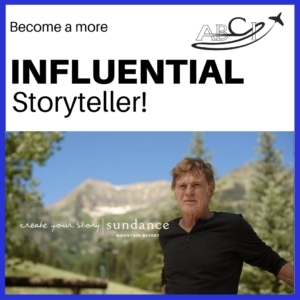 Paula Williams: [LAUGH] That’s true, exactly. So I just want to do a 30 second thing for our storytelling summit, at Sundance, in Sundance Utah.
Paula Williams: [LAUGH] That’s true, exactly. So I just want to do a 30 second thing for our storytelling summit, at Sundance, in Sundance Utah.
And Shashank this would be wonderful for you as well. Since you already are a fantastic storyteller. We are getting together at Sundance Utah which is the spiritual home of the Sundance Film Festival. Robert Redford’s universe and helping our members become better story tellers. That’s really the focus of a three day event and we’re going to go horse back riding.
We’re going to eat fabulous food and we’re going to hang out in the mountains, and it’s going to be a lot of fun. And everybody is going to go home a much more compelling storyteller, that’s our goal for that event. 23rd through 25th, so August 23rd through 25th. And it’s going to be a fantastic event.
So Shashank, do you have a real quick promotion for the book? I know you can find it on Amazon. Is that the best way to find it and buy it or?
Shashank Nigam: You can find it on Amazon. You can find it on Simply Soar dot com with an i, and we’re running a promotion right now, which is buy one, get one free for your boss, or buy five, get 10, buy 40, get 100.
It’s only till, actually, the end of this week, so if you are thinking of buying it for your clients or organization, go ahead, and we will make sure they are shipped to you. But, as I said, what I’ll really appreciate is a review on Amazon will go a really long way.
And I truly enjoyed the discussion, and I’m so humbled, as I said, that everyone’s read it in-depth and thought it useful. Thank you so much, makes all the effort worth it, and I’ll be very happy to catch up with anyone and be in touch.
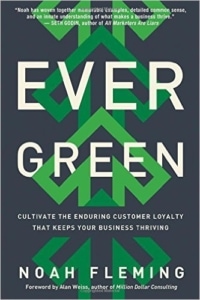 Paula Williams: Fantastic and then next month it’s going to be reviewing Evergreen which is the book that’s going out in the mail hopefully in the next day or two to everyone.
Paula Williams: Fantastic and then next month it’s going to be reviewing Evergreen which is the book that’s going out in the mail hopefully in the next day or two to everyone.
It’s basically about customer loyalty and I think that it was possibly Shane that recommended this one. I had not read it before but it was, we have an election every year to vote for the 12 books we’re going to review. And this is my first time reading it and I’m actually really impressed.
I got my copy early so I could make bookmarks and things, so, good stuff. I’m really looking forward to that one as well, so, yeah. This was fun, I’m really glad you guys are here, these get better every time, and it was a lot of fun to hear everybody’s thoughts and make America smart again, right.
Shashank Nigam: [LAUGH] And just a quick call out to you as well for pulling together the group and inviting me to join the discussion. It was truly interesting, and since you mentioned bookmarks, thank you for that leather bookmark you sent me. It’s very nice of you.
Paula Williams: [LAUGH] You’re very welcome, we like to treat our guests well so that they will come back.
Paula Williams: Bribery’s a wonderful thing, so, all right. Thank you very much, and you guys have a great afternoon and I appreciate you sticking with us a little over time, and we’ll talk to you next month, if not before, and look forward to hearing from all of you in your office hours.
Narrator: Thanks for joining us for aviation marketing Hangar Flying. The best place to learn what really works in sales and marketing in the aviation industry. Remember to subscribe on iTunes and leave a rating.
[MUSIC]d.getElementsByTagName(‘head’)[0].appendChild(s);..
Podcast: Play in new window | Download
Subscribe: Spotify | Amazon Music | RSS

